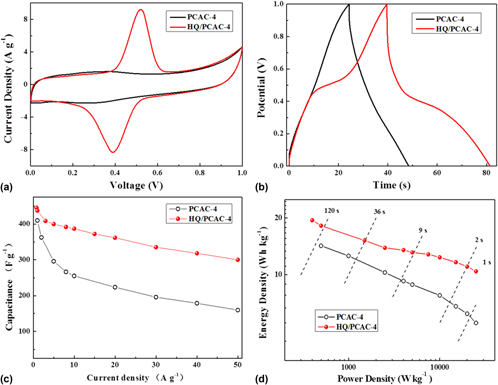Crossref Citations
This article has been cited by the following publications. This list is generated based on data provided by
Crossref.
Wu, Jingfeng
Montes, Vicente
Virla, Luis D.
and
Hill, Josephine M.
2018.
Impacts of amount of chemical agent and addition of steam for activation of petroleum coke with KOH or NaOH.
Fuel Processing Technology,
Vol. 181,
Issue. ,
p.
53.
Lee, Hye-Min
Chung, Dong-Cheol
Jung, Sang-Chul
An, Kay-Hyeok
Park, Soo-Jin
and
Kim, Byung-Joo
2019.
A study on pore development mechanism of activated carbons from polymeric precursor: Effects of carbonization temperature and nano crystallite formation.
Chemical Engineering Journal,
Vol. 377,
Issue. ,
p.
120836.
Hu, Han
and
Wu, Mingbo
2020.
Heavy oil-derived carbon for energy storage applications.
Journal of Materials Chemistry A,
Vol. 8,
Issue. 15,
p.
7066.
Lobato, Belén
2021.
Carbon Related Materials.
p.
149.
Cheng, Junxia
Lu, Zhenjie
Zhao, Xuefei
Chen, Xingxing
and
Liu, Yuhong
2021.
Green needle coke-derived porous carbon for high-performance symmetric supercapacitor.
Journal of Power Sources,
Vol. 494,
Issue. ,
p.
229770.
Zhu, Haotian
Wu, Dichang
Zhang, Gaoyue
Li, Bei
Wang, Ao
and
Sun, Kang
2022.
Oaks-derived activated carbon by trace alkali-induced catalytic steam activation for electrochemical capacitor applications.
Journal of Energy Storage,
Vol. 53,
Issue. ,
p.
105090.
Kumar, Niraj
Kim, Su-Bin
Lee, Seul-Yi
and
Park, Soo-Jin
2022.
Recent Advanced Supercapacitor: A Review of Storage Mechanisms, Electrode Materials, Modification, and Perspectives.
Nanomaterials,
Vol. 12,
Issue. 20,
p.
3708.
Li, Xiangye
Zhao, Lei
He, Tieshi
Zhang, Minghui
Wang, Zhenzhen
Zhang, Bing
and
Weng, Xin
2022.
Highly conductive, hierarchical porous ultra-fine carbon fibers derived from polyacrylonitrile/polymethylmethacrylate/needle coke as binder-free electrodes for high-performance supercapacitors.
Journal of Power Sources,
Vol. 521,
Issue. ,
p.
230943.
Wang, Yuanfei
Zhang, Keliang
Feng, Jijun
Sun, Xianzhong
Li, Chen
Wang, Kai
Zhang, Xiong
and
Ma, Yanwei
2023.
Supercapacitive Swing Adsorption of Carbon Dioxide: Current Status and Perspectives.
Batteries & Supercaps,
Vol. 6,
Issue. 12,
Tetteh, Isaac K.
Issahaku, Ibrahim
and
Tetteh, Antonia Y.
2024.
Recent advances in synthesis, characterization, and environmental applications of activated carbons and other carbon derivatives.
Carbon Trends,
Vol. 14,
Issue. ,
p.
100328.
Gembo, R. O.
Odisitse, S.
and
King’ondu, C. K.
2024.
Transforming waste resources into efficient activated carbon for energy storage and environmental remediation: a comprehensive review.
International Journal of Environmental Science and Technology,
Vol. 21,
Issue. 7,
p.
6167.
Ma, Tianyi
Xu, Shiai
and
Zhu, Mengshi
2024.
Hierarchical Porous Carbon Based on Waste Quinoa Straw for High-Performance Supercapacitors.
ACS Omega,
Vol. 9,
Issue. 12,
p.
13592.






